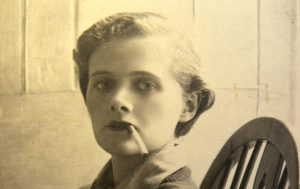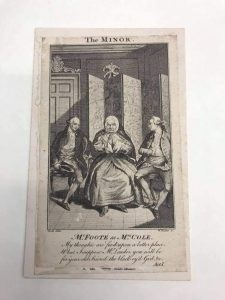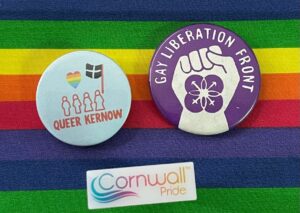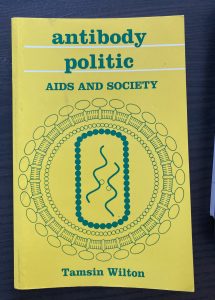
Daphne Du Maurier (1907-1989)
Du Maurier is a well-known novelist who lived and wrote in Cornwall. Perhaps less well known about her is the authors same-sex desire.
Letters unearthed after her death have revealed that Du Maurier grappled with her sexual identity often referring in her letters to her heterosexual encounters as ‘Cairo’ and to homosexual encounters as ‘Venice’.
The BBC2 drama ‘Daphne’ explores Du Mauriers sexuality, which is an excellent and unapologetic look at De Maurier’s same-sex relationships when it is still apropos to gloss over, edit and censor queer relationships of famous figures not generally associated with the LGBTQ community.
Lived in Fowey

Violet Trefusis (1894-1972)
Socialite and author Violet Trefusis is most remembered in the extensive written accounts about her long-standing affair with Vita Sackville-West. The couple spent much time in Cornwall as Violet was the wife of Robert Trefusis, of the well-known Trefusis family of Cornwall.
Violet was the inspirations for many of Nancy Mitford and Virginia Woolf, and her affair with Sackville West has been immortalised on film in ‘Portrait of a Marriage’

(image source Marlow Moss, 1938, photograph Stephen Storm, private collection Digital image Florette Dijkstra © reserved)
Marlow Moss (1889-1958)
Constructivist artist Marlow Moss saw Cornwall as a sort of sanctuary, it was here where Moss embraced their new identity discarding the name ‘Marjorie Jewel’ for Marlow, and embracing their desire to subvert gender norms.
Moss, much like Gluck, also refrained from using a prefix and was even mistaken for a man in newspaper reviews of their exhibitions. It was after this transformation that Moss fell in love with novelist Netty Nijoff and their relationship spanned over two decades.
Moss returned to Cornwall, due to the threat of Nazism on the continent and ended up staying in Lamorna until their death in 1958.
Part of the Lamorna Art Group

‘Michael Cardew at work’. Photo © George Ellis Collection.
Michael Cardew (1901-1983)
Michael Cardew, a potter, was the first apprentice at Leach Pottery in St Ives and a student, colleague, and good friend of fellow potter Bernard Leach. Although married to a woman, Cardew was bisexual and referred to his love of throwing pots as ‘sensual and responsive’, a passion that appeared to jump from pot to potter. He had several relationships with other male potters – most prominently with his ‘great love’ Clement Kofi Athey, whom he taught to pot while in Africa.

(image source http://www.artnet.com/artists/gluck-hannah-gluckstein/medallion-Q9wEoZwMfs1ZOHwaf5Us2w2)
Gluck (1895-1978)
Artist Gluck subverted gender norms and adopted an openly lesbian and gender non-conforming lifestyle.
They famously asked people to refer to them as ‘Gluck, no prefix, no suffix, no quotes’.
Arguably one of Glucks most famous paintings (see above) is of them and their lover Nesta Obermer in a radical depiction of same-sex partnership.
‘My darling own wife,’ Gluck once wrote to Obermer, ‘my divine sweetheart, my love, my life. I made straight for the studio and tried to be busy and have more or less succeeded, except that everything seems so utterly unimportant that isn’t us or connected with us’.
Part of the Lamorna Art Group

(image source:https://www.historytoday.com/archive/menage-roi-edward-ii-and-piers-gaveston)
Piers Gaveston 1st Earl of Cornwall (c.1284 – 1312)
Edward II gave the earldom of Cornwall, including Launceston Castle to his favourite Piers Gaveston. Medieval Chroniclers hinted that the two were lovers and his favour for Gaveston caused much strife in the politics of the day, leading to Gaveston’s beheading in 1312.
This speculation was reinforced by Christopher
Marlowe’s late 16th century play Edward II, and other subsequent depictions of the pair in fiction.
Modern historians have been divided over the subject. Some argue that the evidence for a same-sex relationship is indisputable, while others claim that Gaveston and the King were adoptive brothers.
Launceston Castle.

© National Portrait Gallery, London
Henry Bishop (1868-1939)
This painting of Henry Havelock Ellis, an early sexologist, is a candid portrait of the man himself sitting in a deckchair in painter Henry Bishop’s St. Ives studio. There is some evidence that Bishop may have experienced same-sex desire. He was a lifelong friend of the open-minded Ellis — whose pioneering work in the field of sexology would go on to define queer identities and sexualities in late 19th century Britain. His work was considered radical enough that the bookseller George Bedborough was prosecuted for distributing Ellis’ writings.

© Royal Institution of Cornwall, The Courtney Library
Samuel Foote (1720 – 1777)
Truro Born Georgian Comedian Samuel Foote, was a famous and influential comic on the London stage. He was well known for his mimicry of contemporary individuals and his propensity for appearing in drag. Accusations of sodomy, which was a criminal offence at the time, led to the downfall of his career.
The Courtney Library at the Royal Institution of Cornwall in Truro holds a number of Foote related documents, from engravings to playbills.

Mermaids have become a powerful symbol for the LGBTQ community, and specifically for transgender people, due to the qualities they represent: rebirth and transformation. In fact, the biggest trans charity in the UK is called Mermaids. As a county with such a close relationship to the sea, its no surprise that the ocean and its inhabitants (both real and apocryphal) feature heavily in Cornish mythology. From the Mermaid of Zennor to the Doom Bar Mermaid of Padstow, mermaids are everywhere in our folklore. In St. Senara’s Church in Zennor, you can see a bench-end dated to around 1400-1500 featuring a mermaid — demonstrating that these creatures have been linked to the Cornish coast for centuries.

John Horace Whigham
On 15th June 1916, John Horace Whigham, a fair-haired 22 year old who was reportedly university educated and of independent means, was visiting Falmouth. He happened to make the acquaintance of Duncan Davison, and the two were arrested for having sex. The criminal charge was not for the public aspect of their sexual contact, but the fact it happened at all. Whigham and Davison were both tried and found guilty of buggery.
Unlike similar cases, as Whigham and Davison were both from wealthy families, they were given the option to avoid a jail sentence by agreeing to be committed to a mental asylum and pay a fine — £500 for Whigham and £1000 for Davison (roughly £43k and £86k today). The court documents state that Whigham would be committed to “be prevented from contaminating other members of the community”, during this period homosexuality was regarded as a mental illness, one that can be ‘cured’.
This viewpoint took another 71 years to reverse. The ‘Diagnostic and Statistical Manual of Mental Disorders’ did not remove homosexuality from its list until 1978, and the World Health Organisation only removed homosexuality completely from its own list of mental disorders in 1992. Furthermore, it was only in 2018 that the Royal College of Psychiatry formally apologised for the pathologisation of homosexuality.
However, despite this apology, conversion therapy is still legal in this country as of 2024.

Private Davey & Sergeant Oke
In July 1888, the assize courts of Bodmin heard the case of Sergeant Ernst Oke and Private William Davey — two soldiers in the same battalion of the Duke of Cornwall Light Infantry. It was reported in the Royal Cornwall Gazette of July 1888 that Oke “seduced” Davey, and although both were found guilty of “buggery”, leniency was given to Davey (the younger of the two). Private Davey was sentenced to one year of penal servitude, whereas as the “instigator” of the affair, Sergeant Oke, was sentenced to a lifetime of penal servitude (later commuted to 10 years hard labour).
This difference in punishment is indicative of the social norms within Victorian England. Homosexuality was believed to be ‘catching’, and was therefore heavily medicalised. Often criminal cases slanted towards finding the perpetrator who was ‘infecting’ or ‘leading astray’ the other partner. This led to differing sentences for each person. Davey and Oke represent a multitude of men from the Victorian Period and beyond whose lives are recorded only in court and prison documents. Homosexuality in the British military was only decriminalised in the year 2000. Cases such as these can be difficult to read about, but it is important to remember and understand the history of homosexual criminalisation, as well as the human lives that were forever changed by the cruelty of these laws.

© English Heritage
The Sword and Mirror Burial – gender perceptions in Iron Age Cornwall
At Bryher on the Isles of Scilly, an Iron Age burial was found with grave goods featuring both a sword and a mirror. Traditionally, archaeologists would assume gender based on associated grave goods without conducting any skeletal analysis. This body buried with both a sword (previously thought to be masculine) and a mirror (previously thought to be feminine) is a particularly interesting find and goes to show that we shouldn’t impose our current cultural understanding and perception of gender binaries onto people from the past. We don’t know the details of Iron Age culture and should not assume that grave goods have a correlation with sex and/or gender.

Court documents
The court documents (‘Assize Records’) from 1850-1920 held at Kresen Kernow offer a unique glimpse into this particular period of LGBTQ+ history. This was the time when homosexuality was especially prominent in the public eye, thanks to the high profile trial of Oscar Wilde. It’s interesting to see how this landmark case filtered down to Cornwall in court records — there is a definite uptick in trials at Bodmin Assize Court, and through this 70-year period charges ranged from ‘gross indecency with another man’, to ‘sodomy’, and ‘importuning’. Punishments were equally varied, and their severity can be linked to changing social attitudes. They included death sentences, prison sentences, mental institutionalisation, and heavy fines.
With partial decriminalisation in 1967, followed by the Turing law in 2017, it is important to note that this legacy of criminality is still not over. The Turing law did not overturn convictions for the thousands of men charged with ‘importuning’, an outdated offence which makes them ineligible for a pardon. As many as 50,000 men were left out of this ‘pardon’. Due to the bureaucratic and lengthy appeals process, as few as 200-300 of them have been successful in having their false and homophobic criminal records overturned.

(Image Source: © Falmouth Art Gallery)
Henry Scott Tuke (1858-1929)
British painter Henry Scott Tuke, an Impressionist, was a lifelong resident of Cornwall and a member of the Newlyn Art Group. He was a maritime artist and portraitist, best known for his nude paintings of boys and young men. After his death in 1929, Tuke was largely forgotten until the 1970s, when his work was rediscovered by the first generation of openly gay art collectors. Tuke is now considered a ‘cult figure’ in gay art circles, highly regarded for both his technical skill and the tenderness with which he portrayed his subjects. Falmouth Art Gallery is home to the Henry Scott Tuke Collection, and other examples of Tuke’s work can be found in many galleries around Cornwall.

© Kresen Kernow
OutBack Newsletter (1997-2008)
‘Outback Newsletter for Lesbians in Cornwall and the Far South West’ was a magazine written, produced, and distributed by a group of gay women based primarily in Penzance between 1996 and 2008.
Pre-internet, publications like OUTBACK were an invaluable community resource. For the first time, lesbian women living in Cornwall’s most rural areas were able to make contact with each other. OUTBACK was a fantastic mix of write-in letters, event listings, gardening tips, poetry, art, opinion articles, and personal interviews with local women, and also covered historic events like Cornwall’s Section 28 protests, the boycotting of Trago Mills over homophobic advertising, and the very first Cornwall Pride in 2005. It provides an invaluable snapshot of lesbian life in Cornwall during the late 1990s and early 2000s, and a complete collection of every issue is held at Kresen Kernow.

© Barbara Hosking
Barbara Hosking (1926-2021)
Barbara Hosking was a trailblazing cornish lesbian. Born and raised in Penzance, Barbara studied at the West Cornwall School for Girls, she was a ‘penny a line’ writer for the Western Morning News in 1945-47.
She worked her way up the ranks of being a press officer, and was a member of the Labour Party before taking on a role in the Civil Service. During her time as a civil servant, Barbara was privy to the establishment of the single market, the tragedy of the 1972 olympics and the decriminalisation of homosexuality.
Barbara Hosking was also heavily involved in the establishment of WestCountry TV and won an OBE for her championing of Cornish Language programming.
Her autobiography ‘Exceeding my Brief’, published in 2017 describes her struggle with her sexuality as a teenager during the 1940s/50s when being a lesbian at this time meant social ostracism and tells the fantastic story of early lesbian clubs in London, such as Gateways. Barbara Hosking kept her sexuality private, until coming out at the age of 91.

© Days of Love
Bryher, H.D, and Macpherson (1890s-1980s)
Annie Ellerman was a writer with a particularly close relationship with Cornwall — even renaming herself ‘Bryher’, after the Isles of Scilly. In 1918 she met her life-long partner, poet Hilda Doolittle (H.D.). It was an open relationship, and Bryher eventually married Hilda’s lover Kenneth MacPherson. They spent much of their time together raising H.D’s daughter Perdita in the Isles of Scilly and Mullion Cove. H.D wrote poetry framing the works of Sappho within the Cornish landscape, and Bryher’s autobiography, The Heart of Artemis, is an excellent resource for understanding these women and the impact Cornwall had on their lives.
“[…] we are inclined to visualize these broken sentences and unfinished rhythms as rocks—perfect rock shelves and layers of rock between which flowers by some chance may grow but which endure when the staunch blossoms have perished.”
H.D, The Wise Sappho

Badges (1970-2021)
The history of the UK’s modern LGBT community can be mapped through the badges that were made and worn over the past century — documenting the activities, campaigns, and changes in social attitudes that have occurred in the UK over the last 50 years. Wearing a badge is a simple but powerful signifier for coming out and being seen. Badges helped early LGBTQ+ activists to recognise each other and create a unified community. The purpose of displaying this 1970s Gay Liberation Front badge alongside two modern badges is show our journey – where we’ve been, where we are, and perhaps, where we hope to be.

© FAMAG 2012.22 Falmouth Art Gallery Venus attired by the Three Graces
Anne Killigrew (1660-1685)
Artist and poet Anne Killigrew was a celebrated woman from the 17th Century. While she spent most of her time in Court and not in Cornwall, Anne is from the well respected Cornish Killigrew family from Arewenak, Falmouth.
Anne died of smallpox aged only 25, yet during her short life she was a respected painter and poet.
While we cannot say for certain how she would have defined her sexuality, we can read her poetry, which was a passionate declaration of same-sex romantic love.
In her poem ‘The Soft Gentle Motions of Eudora’ she describes the beauty of this ‘Eudora’ and how she is more beautiful than music —
“How Silken her Actions appear,
The Aire of her Face,
Of a gentler Grace
Then those that do stroke the Eare.”

Landscape, Cornwall Quarry.© Estate of Cedric Morris, Falmouth Art Gallery
Cedric Morris (1889-1982)
Modernist artist Cedric Morris was a Welsh artist who studied painting at Zennor in Cornwall.
Cedric Morris met his life-long partner Arthur Lett-Haines in London in 1918, just after the Armistice of WW1 and soon after Morris had been discharged from the Army. The couple moved down to Newlyn where they converted a few cottages into art studios and soon Morris became a significant post-impressionist artist with the Newlyn Artist Colony.
Despite eventually leaving Newlyn for Paris and eventually settling in Suffolk, Morris frequently came back to Cornwall as his sister, Nancy, settled in Myrtle Cottage near Penzance.

(c) Penlee House Gallery & Museum, Penzance / Harry Penhaul Archive
Pantomime Dames
The ‘pantomime dame’ is an iconic cornerstone of British theatre culture. Historically speaking, men dressing as women in theatre performances was not seen as a comment on gender or sexuality, but as a necessity — since women were not allowed to perform onstage until 1661. That said, interesting parallels can be drawn between dames and drag. Both pantomime dames and drag performers are male entertainers playing the character of a woman, publicly pushing the boundaries of gender – yet one has been accepted by society as far back as the 1600s, and the other has faced consistent criminalisation. Penlee House in Penzance has a fantastic collection of early photography that shows the evolution of the pantomime dame through the decades.

© National Portrait Gallery, London
John Milne (1931-1978)
John Milne was a sculptor who moved to St Ives after studying in Greece and France. While in St Ives, Milne became a friend, pupil, and then later assistant, to artist Barbara Hepworth. Milne bought Trewyn House next door to Hepworth’s studio and was part of the gay and bohemian subcultures of St Ives during the 50s and 60s.

Serena Wadham (1930-2006)
For the first 33 years of her life, Serena Wadham made a living as a musician in Nancledra, Cornwall — until, in 1963, a wrist injury led her to retire from music and join the Black Star Publishing Company in London as a trainee photojournalist. Over the next two decades she would become one of Britain’s most prolific street photographers, capturing the hopes, anxieties, and day-to-day lives of ordinary people as they navigated the social upheaval of the 60s and 70s. Her experiences as a lesbian working in a male-dominated field gave her a unique perspective that shines through in her unflinchingly intimate portraits of Britain’s working class and immigrant communities, as well as her coverage of protests and peace marches for second wave feminism and nuclear disarmament. She was best known for her ‘Women at Work’ series, which featured bus drivers, scientists, street vendors, and seamstresses, as well as the Cornish sculptor Barbara Hepworth. After two whirlwind decades in the field, Serena returned to Nancledra in 1987, where she lived until her death in 2006.
Serena Wadham’s photo collection is held by The Morrab Library in Penzance, and can be accessed online here:
http://photoarchive.morrablibrary.org.uk/items/browse?collection=11

Cecil Williams 1906-1979
Cecil Williams was born in Bodmin in 1906, where he worked as a teacher and playwright before moving to Johannesburg, South Africa in 1928. Williams was a leading activist in the anti-fascist Springbok League, intertwining his activism with his theatre career — his play Kimberley Train (1959) was an anti-apartheid production with both white and black actors in the cast. As a gay man at a time when homosexuality was taboo, he was frequently assaulted; and at one point, in 1958, arrested for treason due to his sexuality and politics. He later became involved with Nelson Mandela and the African National Congress: allowing his apartment to be used as a meeting place and offering his car as a means for transportation, with the cover story of Mandela pretending to be a ‘chauffeur’ to Cecil. On August 5th 1962, Mandela and Williams were captured by police. Cecil fled to Glasgow after his arrest, where he worked as a theatre director and campaigned with the Glasgow chapter of the Anti-Apartheid Movement.
Mandela biographer Martin Meredith described Williams as ‘a debonair figure’, known for his parties, and he was remembered as ‘friendly and popular’ by fellow activists Lionel and Hilda Bernstein. In 1998 a film about Williams, The Man Who Drive With Mandela, was released, bringing his story into the public eye.

A L Rowse (1903-1997)
Alfred Leslie Rowse was born in St Austell to Annie and Richard Rowse, a china clay worker, on December 4th 1903. Despite his parents having little formal education, Rowse showed a natural aptitude for history and was awarded a scholarship to Oxford University in 1921. He thrived in academia and became an eminent scholar on Elizabethan England, authoring almost 100 books. In 1977, he published ‘Homosexuals in History: A Study of Ambivalence in Society, Literature and the Arts’- which profiled male figures from history who were sexually ambiguous and put forward a theory linking sexuality with creativity. Sadly, the book was not well received, as it provided no references and many took umbrage to his ‘outing’ of historical figures. While he was cautious of being too open about his homosexuality, his diaries, which were published posthumously, paint a vivid picture of the desires and struggles he experienced as a gay man in the 20th century.

Ithell Colquhoun (1906-1988)
As an upper class artist, Ithell Colquhoun was afforded a social privileges rarely enjoyed by the rest of the population – and a world away from the difficulties of the queer working class. She chose to live truthfully and privately in Lamorna, Cornwall. Colquhoun was also a friend of renowned artist Marlow Moss, another queer creative who lived in Lamorna around this time. Moss even pops up in Colquhoun’s diary entries. Though she never publicly identified herself, Colquhoun had this to say about her feelings for another woman, Andromaque Kazou:
“I did not try to analyse the stirrings within me, I could not reflect upon them while thus borne along. It was not until later and in calmer intervals, that I recognised this torrent that swirled me onwards… I was being carried, indeed, to the Lesbian Shore.”

Tamsin Wilton 1953 -2006
Tamsin Wilton, born and raised in Redruth, was a lesbian activist and the UK’s first professor of human sexuality. Her ability to take complex academic theories and disseminate them to the wider LGBT community in an accessible, often humorous way, made her work uniquely impactful.
This was especially important during the HIV/AIDS crisis in the 1980s-90s, as accurate information about the pandemic was hard to come by – for example, the historic London bookshop ‘Gay’s the Word’ was raided by police for stocking AIDS pamphlets from America, as they were considered obscene material. By sharing up-to-date medical and social information about the crisis, Tamsin ensured the South West’s LGBT community was proactive and prepared, and undoubtedly saved lives doing so.

Annie Williams – 1860-1943
Annie Williams was born in Feock, Truro in 1860. After a long and respected career as a teacher, she set aside her role as Headmistress of Crantock Public Elementary School aged 47 to take an active part in the growing suffragette movement.
Annie was an important figure in the suffrage movement. In 1912, she took part in a window-smashing protest outside the House of Commons. She consequently spent a month in Holloway Prison and was force-fed during her hunger strike, for which she was awarded a medal by the WSPU (Women’s Social and Political Union).
It was through Annie’s work with the WSPU that she met her life-partner, fellow suffragette Lettice Floyd. Lettice and Annie stayed together until Lettice’s death in 1934. She willed her estate solely to Annie, who later moved back to Truro.
This letter is from 1908, and was sent at a time when Annie was living in Crantock, Newquay. It is a notice that was issued by the Governor of Holloway Prison alongside a returned letter that could not be given to its intended recipient — the imprisoned Lettice Floyd.
